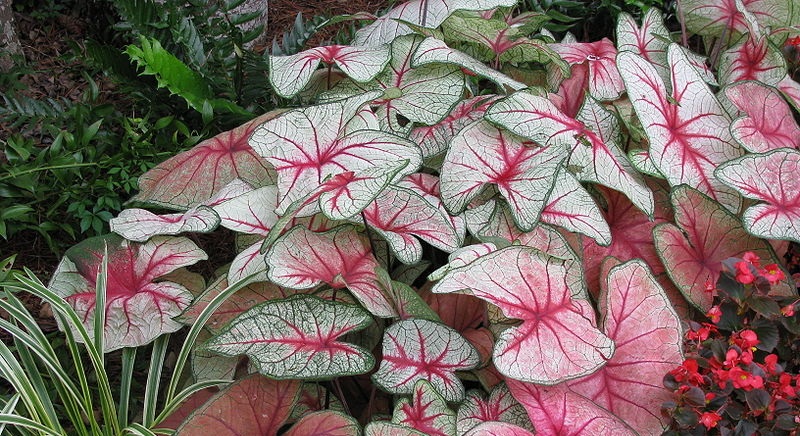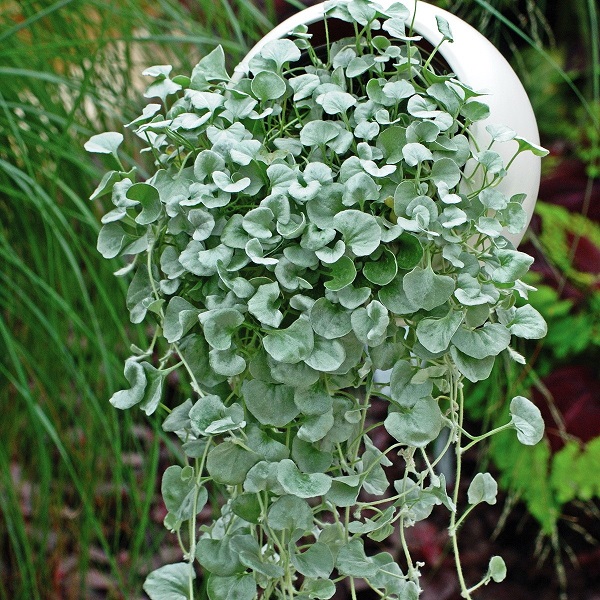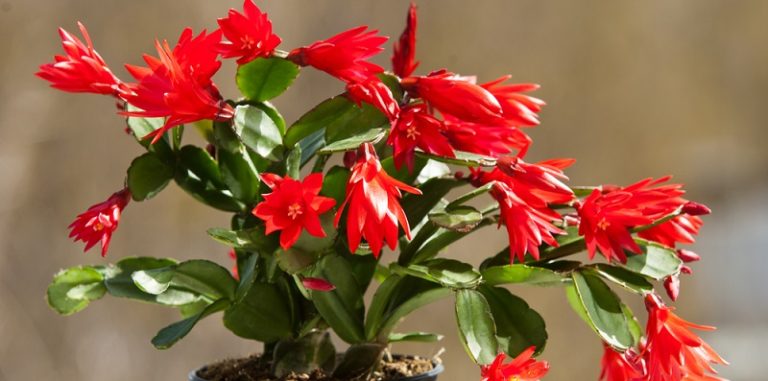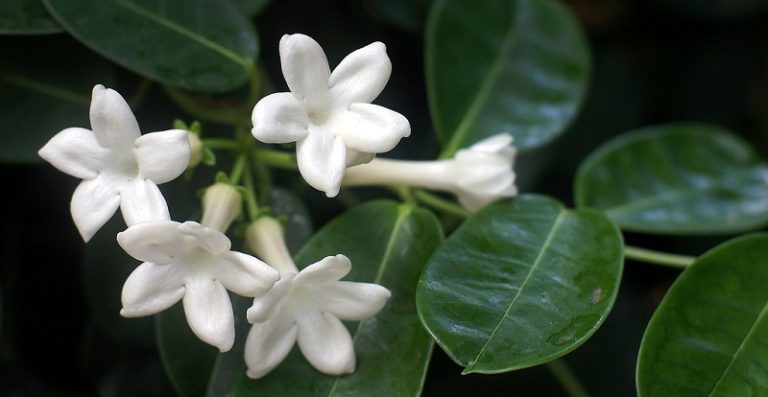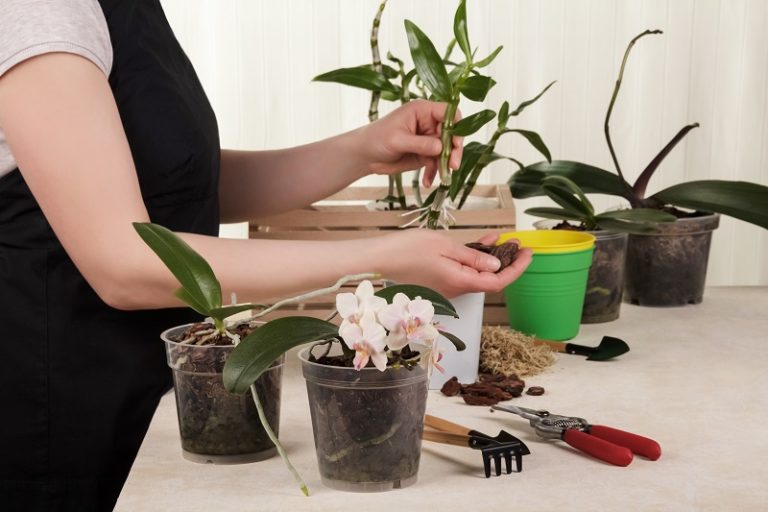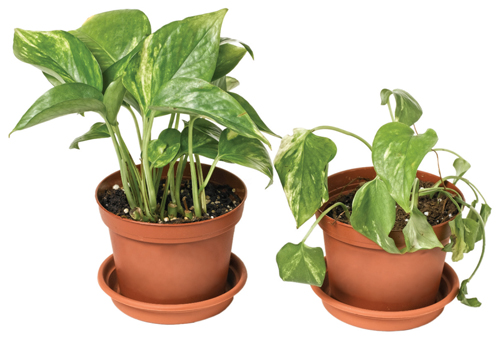Caladium: care and reproduction
Paper-thin, brightly painted heart-shaped leaves – this amazing plant is called caladium. Caladium is a perennial houseplant with large, bright leaves, belongs to the Aroid family. The roots of the caladium are tuber-shaped, so during dormancy (autumn – winter) the leaves disappear and in the spring new ones grow, which decorate our rooms with bright colors until early autumn.

Caladium leaves are heart-shaped, green, white, yellow, pink, purple. The height and width of the plant when grown indoors can reach up to 30 cm. The color of the leaves can be monochromatic or with colored veins, spots, stripes or with mosaic ornaments. The flowers are small, white, collected in small inflorescences in the form of heads of cabbage and bedspread. In its natural environment, caladium can be found in the tropics of America and Brazil, the height of caladium in nature is impressive, it can grow up to 5 meters in height, and the leaves are so large that they can protect a person from rain.

Types of caladium
The caladiums that we grow indoors are hybrids obtained by crossing Humboldt, Schomburg and bicolor caladiums.
- Humboldt’s caladium (Caladium humboldtii). The leaves are oval, up to 10 cm long and up to 5 cm wide. The color of the leaf is dark green with silvery-white spots.
- Caladium schomburg (Caladium schomburgkii). The leaves are oval heart-shaped, up to 15 cm long and up to 12 cm wide. The color of the leaves is red above, silver between the veins, lighter below. It has several varieties, differing in the color of the veins and leaf plate.
- Caladium bicolor, or Arum bicolor. The leaves are elongated, oval, large, up to 30 cm long and up to 15 cm wide. The color is quite different, from green to red, with spots of different shapes and colors.
From these three species, breeders have bred a huge number of varieties of hybrid caladiums. We will consider the most popular ones with the help of photos.
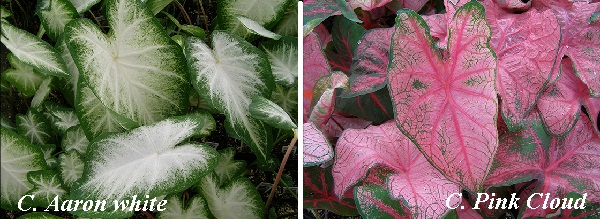
How to care for caladium
Caladium is a seasonal plant, it releases its leaves in spring and sheds them in autumn. Many people grow caladium as an annual plant.
Caladium care in the autumn-winter period
In autumn, caladium leaves begin to dry and fall off, which means that the plant begins a dormant period (from late autumn to spring), it’s time to hide the caladium in a cool (15°C) and dark place until next spring (it is unnecessary to remove the tuber from the pot). Humidity should be at an average level. But don’t let the caladium tuber dry out – you should water it from time to time.
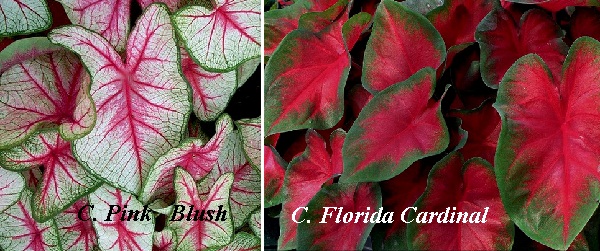
See also:ORCHIDS – ORCHID CARE
Caladium care in spring and summer
In spring, the caladium tuber begins to wake up. Therefore, it must be pulled out of the ground, carefully examined for damaged and diseased areas. Rotten tubers must be removed, cut off the affected areas and sprinkled with charcoal, leave the treated tubers for 30 minutes to dry. Healthy tubers should be planted in a fresh substrate mixed with charcoal. You need to plant caladium tubers to a depth equal to its diameter (for example: tuber diameter 5 cm, planting depth 5 cm). After planting the tuber, water the soil thoroughly. Cover the pot with an opaque plastic bag (caladium likes to wake up in a dark and well-moistened place). Once a day, you need to ventilate the soil with the planted tuber (open for 20 minutes) to allow the earth to breathe. As soon as the first sprouts appear, the bag must be removed so that the young caladium plants begin to get used to the ambient temperature. Also, do not forget to spray and water the young plant (tubers can rot from too abundant and frequent watering).
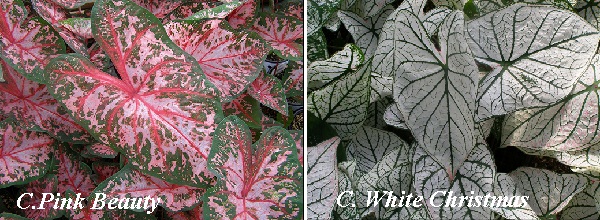
Light brightness for caladium
Caladium likes fairly bright, but not direct sunlight. Caladium will feel good on the northeast and northwest windows. Caladium categorically does not like direct sunlight and drafts.
Air temperature for caladium
Caladium is a thermophilic plant, a comfortable temperature from spring to autumn should be 20°C and above, but not lower than 15°C.
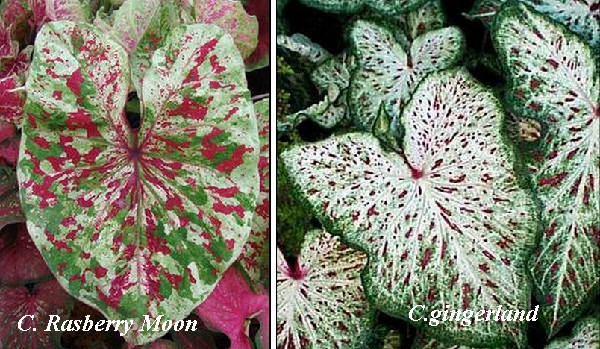
Watering and humidity for caladium
In summer, the caladium should be watered abundantly. Use water for irrigation at soft room temperature. Caladium needs frequent spraying, spray the plant twice a day with soft water.
Fertilizer for caladium
The period of active growth of caladium is quite short, therefore, for a more lush bush and for bright colors of leaves, caladium needs to be fed regularly.In the period from March to April, feed 1 time per week, use complex mineral fertilizers for ornamental deciduous plants. From mid-July, top dressing should be gradually reduced, and in August, reduce watering.
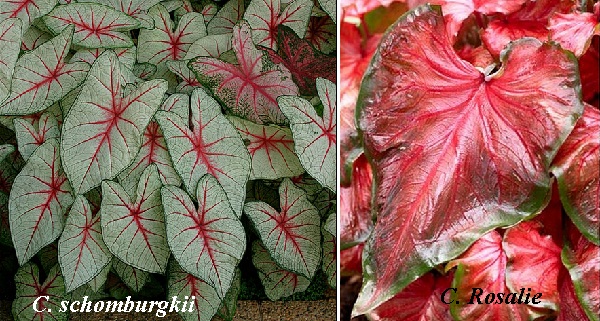
Transplanting and soil for caladium
It is impossible to transplant caladium during the growing season. Caladium loves loose and light soil. The substrate must be rich in nutrients. Earthy mixtures used for spathiphyllum are suitable.
Caladium propagation
Caladium propagates by dividing the tuber into parts. When the tubers have already sprouted a little, you need to take the tuber and cut it into pieces so that there is a bud on each part. Cut points must be treated with crushed charcoal and dried in the open air for 2 hours. Immediately after planting, such tubers are not watered.
Pests and diseases
All diseases in caladium occur with improper care.
Spots appear on the leaves – the appearance of the anthracnose fungus, excessive watering, excessive use of fertilizers, direct sunlight. Remove damaged leaves, reduce watering.

